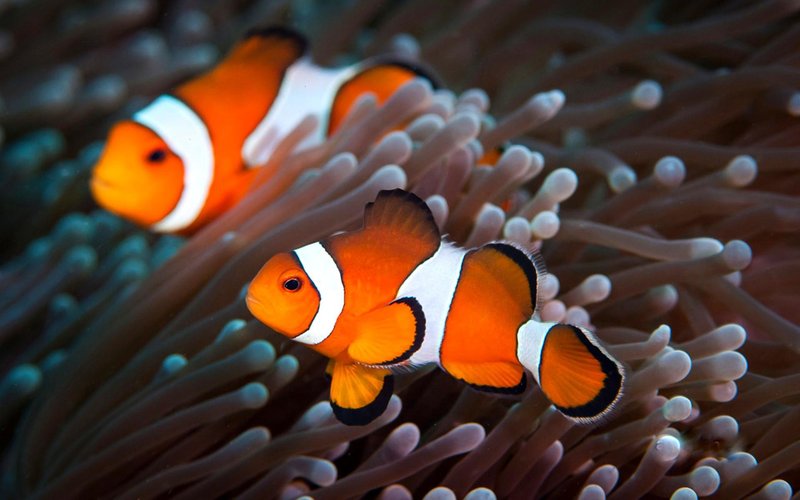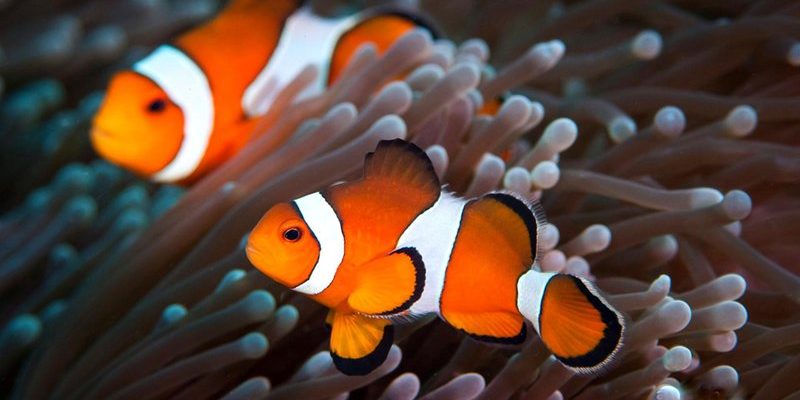
Clownfish hold special significance across different cultures, often symbolizing resilience, community, and even bravery. But here’s the thing—many of the beliefs and stories around them can be either exaggerated or completely off the mark. As we dive deeper into the world of clownfish, we’ll separate fact from fiction, exploring what makes these fish so intriguing beyond their vibrant appearance. So grab your metaphorical snorkel—let’s explore the underwater myths and cultural beliefs of this remarkable species.
1. The Bond with Sea Anemones
One of the most well-known aspects of clownfish is their relationship with sea anemones. Clownfish and anemones have a mutualistic relationship, meaning they both benefit from each other. The clownfish gets protection from predators while the anemone gets nutrients from the clownfish’s waste. This relationship has inspired various stories about harmony and cooperation in nature.
However, not all tales are accurate. Some folklore suggests that clownfish can survive in any kind of anemone, which isn’t true. There are specific species they’re symbiotic with, like the *Heteractis magnifica*. If you ever hear someone say all clownfish can thrive in all anemones, that’s a myth! The reality is that these fish have evolved to be adapted to specific types, which shows just how specialized nature can be.
2. The Courage of Clownfish
Clownfish are often portrayed as brave little warriors. In many cultures, they symbolize courage due to their instinct to defend their home, the anemone, from intruders. This behavior has led to various tales, often romanticizing their fierce nature. You might picture them as bold defenders standing their ground against much larger fish, which is both relatable and charming.
Yet, it’s interesting to note that this bravery has limits. While they can defend their territory, they’re not invincible. If faced with a predator much stronger, they’ll likely retreat. This layer of truth adds depth to their representation. Clownfish teach us a lesson about knowing when to stand firm and when to yield, don’t you think?
3. Misunderstandings About Their Coloration
Many myths revolve around the bright colors of clownfish. Some cultures believe their vibrant hues are a sign of good luck or prosperity. While the coloration does play a role in mating and predator avoidance, it’s fascinating how much we project onto them. The idea that these colors bring fortune might stem from their positive representation in media and art.
In reality, the bright orange and white stripes serve as warnings to potential threats. They help camouflage the clownfish among the anemones. So while they look charming, their beauty is not purely for aesthetics—it’s a clever survival strategy! Understanding this can change how we view not just clownfish but the myriad ways nature evolves.
4. Clownfish in Folklore and Art
Throughout history, clownfish have made appearances in various forms of art and folklore. In some Pacific cultures, these fish are celebrated in story and song, often depicting them as symbols of family and loyalty. You might find tales about clownfish helping other sea creatures, reinforcing their community values.
Interestingly, these representations have evolved over time. In modern pop culture, they’ve turned into symbols of adventure, especially thanks to movies. But this contemporary image sometimes overshadows their traditional significance. It’s important to consider how these legends can teach us about community and protection—not just among fish, but in our own lives too.
5. Environmental Myths
As we dive deeper, let’s talk about some common myths surrounding the environmental role of clownfish. Many people believe that removing clownfish from their habitats won’t impact the ecosystem significantly. However, the truth is quite the opposite. Removing them can disrupt the delicate balance of the marine environment, affecting not just the clownfish but also the anemones and other creatures that depend on them.
Some cultures promote sustainable practices regarding fishing clownfish. They consider it a crime against nature to overfish or destroy anemones, which shows a profound respect for marine life. It’s a reminder that every creature has its role in the ecosystem, and respecting that balance is crucial.
6. Clownfish’s Popularity and Captive Breeding
Recently, clownfish have gained immense popularity in the aquarium trade. This has led to various myths about their ease of care. Some people think that because they’re colorful and featured in movies, they must be simple to maintain in home aquariums. However, they require specific water conditions and dietary needs, which can be complex for beginners.
Cultural beliefs about clownfish have also shaped breeding practices. In some communities, breeding clownfish is seen as a way to preserve their species and respect their roles in marine ecosystems. While this is a great approach, it also highlights the importance of researching how to care for them properly before diving into ownership.
7. Connecting Cultural Beliefs to Conservation Efforts
We’ve touched on various myths and cultural beliefs, but there’s a significant takeaway here—conservation. Many of these stories emphasize the need for protecting clownfish habitats and, by extension, the oceans. Understanding their importance in the ecosystem can motivate communities to engage in conservation efforts.
When cultures celebrate the clownfish, they also indirectly encourage sustainable practices. By building awareness around their current myths and the truth behind them, we can work together to ensure clownfish continue to thrive. It’s like we’re all part of a larger story that promotes respect for nature.
✨
Let’s wrap this up. Clownfish are more than just symbols of cuteness from popular culture; they carry rich myths and cultural beliefs that tell stories of community, bravery, and respect for nature. By understanding these aspects, we can foster a deeper appreciation for these fascinating fish and the ecosystems they inhabit. As we explore our world, let’s take a moment to reflect on the significance of every creature, clownfish included, in keeping our oceans vibrant and healthy.

